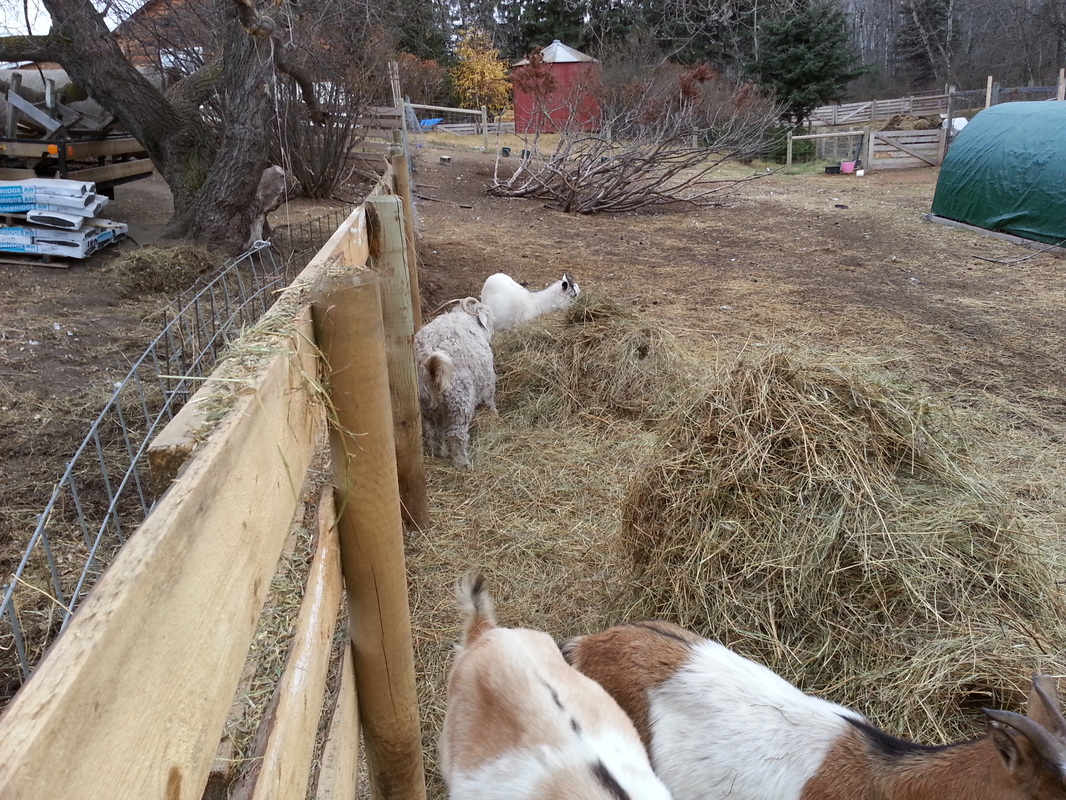Farmers who grow hay usually plow up a field and then use a herbicide such as Round Up to kill the weeds and grass prior to planting the hay grasses that they desire. The most common mix in this area, which is for feeding cows over winter, is Timothy, Alfalfa and Brome, mostly done in three equal amounts. The seeds are driven into the ground with an air seed drill. Sometimes a chemcial fertilizer is used when the seedlings sprout. Occasionally, manure from cows is spread in the fall or spring first.
Then the hay grows and hopefully will get to the stage where it can be cut. If it is left too long, the stems are coarse and the food value depletes. If it is cut too soon, the nutrition is not optimum. Timing is crucial, but then the weather has much to do with the curing process. If it rains on the cut hay, it leaches the goodness out and the hay is much less valuable than hay with no rain. If there is a lot of rain the hay has little food value left, can be subject to mould and is not worth much.
The hay cut in a long fall season is a second cut and is usually the better of the two cuts. It is shorter and the stems are not developed so they are palatable. If the hay has been fertilized during initial growth and there has been sufficient rain, it is the most desireable hay, but again the weather makes a big difference. If the hay is too dry, the leaves of the alfalfa will fall off. If it is too moist, the hay will mould. It must reach a certain moisture level, which can be measured by a meter, before it can be baled. Usually it is cut then turned over once to ensure even drying.
Then there is natural grass hay, that is hay that is not planted or has not been planted for quite a few years. There would be a variety of weeds in the hay, from dandelions and thistles to poplar saplings and wild roses. This is a very good hay for browsers like goats, which prefer to eat everything but grass. Many of the wild edibles have more food value and more minerals than the planted crops. But farmers don't like weeds and they tend not to allow this type of hay to grow.
A farmer will also harvest grass in slough areas and ditches. Depending on the harvest, the hay can be great or terrible. Timing, again, is crucial.
When ruminants are fed poor quality hay, the protein level is not adequate and the animals will lose weight. If they have enough variety of plants in the hay, they will do better and if the hay is optimum, premium hay, they will thrive. Finding that good hay is hard and when farmers have it, they do not want to part with it usually. Since I do not have equipment and machinery to plant or harvest hay, I must purchase it.
So far this year, I have purchased hay from three different farmers and with two, some of the hay was good, and the rest is not. One of the farmers sold hay that the animals will not eat. It was expensive too, left too long in the field and harvested too dry so the nutrients are not present. I have found some good quality hay and am going to purchase it and sell some of the poor quality I was sold earlier, but not until March or so, when hay is hard to find.
The sheep and goats are very fussy about their hay. They love the weeds and leaves and eat the grass, but not old grass with hard stems. More than 50% of the bad hay is wasted so cheap is not better in this case. Wasted hay means a lot of extra work, forking it both in, then out of the feeders and finally piling it to compost because the animals did not eat it. Good hay, on the other hand, is eaten and there is far less waste, far less work too, so it is worth the extra money.
Now I know more about hay and how it is produced and why some is better than others, I have a better idea of how to shop for it. One thing though, the whole hay field may not be the same, as I have also discovered, so purchasing all of what is good at one time is best. Next year I will have so much more knowledge and be able to make better choices for feeding the animals at the Fat Ewe Farm. Whew!


 RSS Feed
RSS Feed